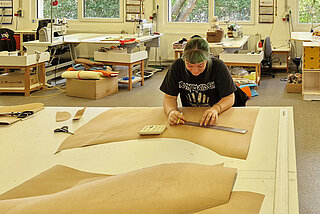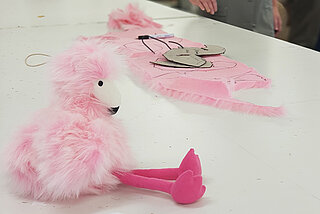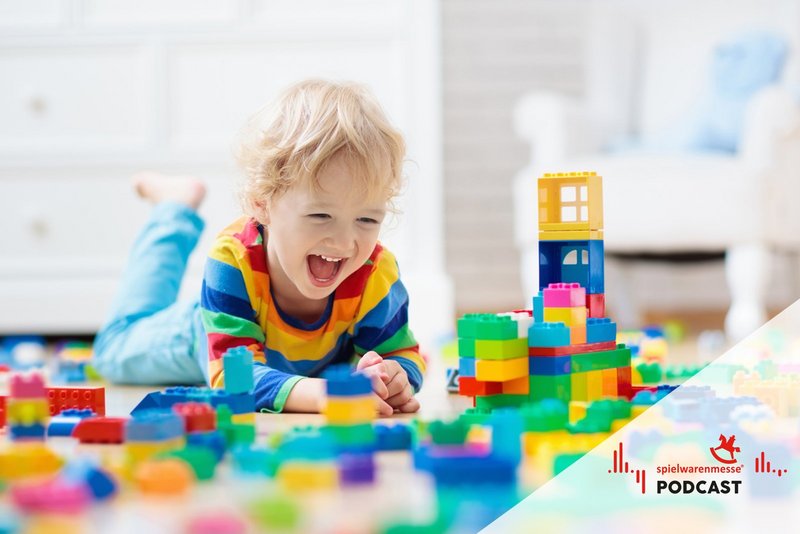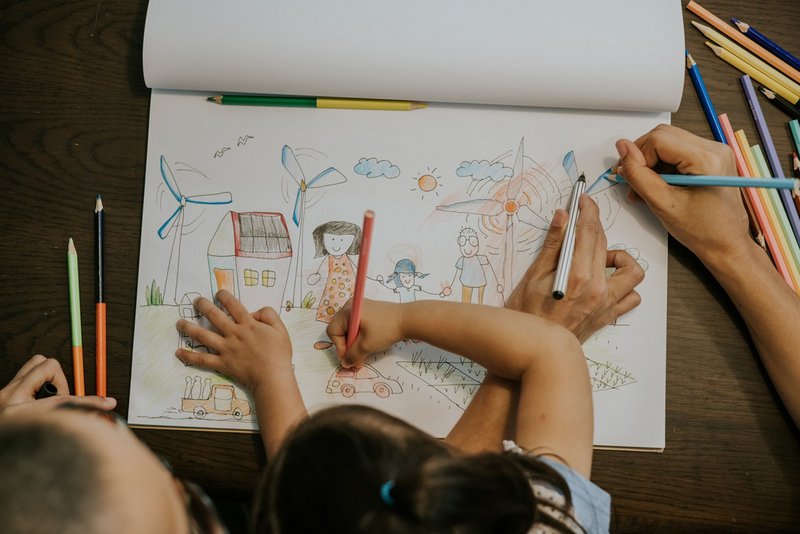
Do what you want
... preferably toys!
By Sibylle Dorndorf
Everything used to be better. At least at the North Pole. There, elves and goblins made the loveliest toys, played practical jokes, drank cocoa and snacked on cookies in the perfect, year-round Christmas wonderland. That was a long time ago. At some point, the workbenches of toy manufacturers were moved to the Far East and other low-wage countries. Toys, manufactured and sold by price, became mass-produced and thus disposable. There were no elves and goblins sitting in gloomy factories, but more poorly paid migrant workers who were happy to support their families in distant villages with the little money they earned. They were barracked in the factories, did not see their children or parents for months or years, ate and slept in barracks. Lined up in rows and under working conditions that would be unthinkable in Western industrialized countries, they painted doll heads, sewed and stuffed stuffed animals, screwed wheels on toy cars, and mounted Light & Sound modules on scale trains. That, too, was a long time ago.
Because times were changing and it became known that the wholesome elf wonderland had cracked, many people no longer wanted to buy toys made on those workbenches and under those conditions. Companies also longed for the Christmas wonderland back, because elves and goblins didn't steal molds, copperplate products, or use illicit materials in manufacturing. They were satisfied with cookies and cocoa and did not always want more money for their work. Indeed, the workers at the distant workbenches had woken up. They were making demands, and when these were not met, they simply migrated to the nearby chip factories, which were plentiful and offered better wages. The situation became increasingly uncomfortable for the toy manufacturers. Raw materials became scarce and therefore expensive, transport costs rose to almost immeasurable levels - and then there was a pandemic. Factories were closed, nothing worked anymore. And because Christmas could not simply be postponed, numerous children sat under the Christmas trees and spoiled the festivities for their parents and grandparents with their shouting. And it happened at that time that even in the last corners of the population seeped through that there was a huge grievance.
Welcome to reality

Arriving in reality, companies began to look for new production sites - and skilled workers who could manufacture toys. They were amazed. Neither one nor the other could be found, and time was pressing, as they didn't want to spoil another Christmas for the people. Some forward-thinking entrepreneurs had kept their production sites and trained skilled workers. The others began to whine and still do.
Welcome to reality, where elves and goblins are relatively rare to non-existent. But unfortunately, toy manufacturers are also a dying breed. Research revealed that exactly two companies are currently training for this profession - and exactly one school offers a dual training track.
How to become a toy maker
Training as a toy manufacturer is carried out in parallel in the training company and at vocational school. Vocational school instruction takes place in block form at the Staatliche Berufsbildende Schule Sonneberg, or SBBS for short. This is a comfortable situation for both the companies and the trainees. Nevertheless, training companies and trainees are in short supply. Asked about the reasons for the lack of interest among young people in this branch of training, Heike Kemnitz, a teacher at the SBBS, criticizes the failure to target potential applicants: "In my opinion, it's because companies don't advertise enough on the social media platforms that young people use today. The profession needs to be made more attractive at all levels and the potentially dusty image upgraded."

Indeed, who would want to take up an uncool profession that is doomed to extinction? The fact that the general conditions for toy manufacturers have changed for the better, that this is a profession with very good prospects for the future and just as good earning potential, does not go down well with school leavers. Heike Kemnitz knows this too. She is convinced: "The job prospects for toy manufacturers will improve significantly when more companies start producing in Germany or neighboring countries again. This will naturally also increase the opportunities for hiring, so young people will see a chance to work for many years in this very creative, varied and demanding profession."
The industry is in demand
The ball is in the toy industry's court. At Kösener Spielzeug Manufaktur and at the plush manufacturer Heunec in Neustadt near Coburg, they are taking it up. The "experts for cuddly toys of all kinds" would like to give young people regular opportunities for this dual training in the company and at the SBBS. But trainees are hard to find. Why, is a mystery to Heunec Managing Director Barbara Fehn-Dransfeld. "We suspect it's ignorance. We ourselves have been training since 2018, as we were also unaware of the training until then - but continuously since then. Making young people aware of our beautiful industry - and not just in marketing, sales and e-commerce - is great fun. After training and three years of work experience, it is also possible to go on to study in the direction of design or creation. All doors are open."
Making young people aware of our beautiful industry - and not just in marketing, sales and e-commerce - is great fun.
Barbara Fehn-Dransfeld
A great profession: Indeed!

The job description from Indeed, one of the largest job exchanges operating worldwide, also goes in this direction: "If you have a creative streak, like to do handicrafts, but are not afraid of using technical machines, training as a toy maker is just right for you. In this profession, you will make your own toys from wood, fabric or metal. Enjoy how you can hold your creation in your hands after your work is done - and make children's eyes light up."
Indeed also explains the opportunities for further training, for example to become a product designer or state-certified designer, but also tunes in to the reality: "Prepare yourself for the fact that you will probably have to relocate due to the scarcity of training places. In return, you'll get a unique education and exciting career opportunities." Because it's such a complex job description, by the way, the pay is also respectable, Indeed subtly hints. Compared to other apprenticeships, toy manufacturing is already well paid in the first few years of training. So what is the problem?
Trainees desperately needed
Possibly because only the Staatliche Berufsbildende Schule Sonneberg, or SBBS for short, currently offers this dual training across all states. The homepage of the SBBS says: "Toy manufacturers produce toys of all kinds, for example dolls, stuffed animals, wooden vehicles, building blocks or accessories for model trains. In doing so, they process materials such as textiles, wood, plastics and metals. This is a 3-year recognized apprenticeship in the toy industry.
The closing words are spoken by two who are in the middle of their training to become toy manufacturers. Tamara Voß and Denise Friedrich have found an apprenticeship at Heunec and won a special prize for this "exotic" profession at the apprentice video contest of the Upper Franconia Chamber of Industry and Commerce (O-Ton IHK Bayreuth). It's worth watching!
The exotics are coming!
The assessment of the Bayreuth Chamber of Industry and Commerce, however, makes one wonder. In Upper Franconia, of all places, a region on the Toy Road, a profession that helped make companies based there such as Zapf Creation AG, Haba, Nici, Franz Schneider GmbH & Co. KG with its well-known rolly toys brand, Heunec, Teddy Hermann GmbH, to name just a few, is given this label. There seems to be great gaps in knowledge among the ranks of the IHK as far as the history of toy manufacturing is concerned. Tamara Voß and Denise Friedrich do not feel hit by this formulation, they are rather amused. They are also familiar with such reactions from their circle of friends. Among their peers, word has not yet spread about the opportunities that are opening up for toy manufacturers right now. Tamara Voß: "I think the biggest problem is that the profession has been forgotten. At that time, toy production went to Asia and the many professions in this field have mostly died. As a result, people I tell about my apprenticeship never really know what a toy maker actually does, let alone that it still exists. However, when I tell them about my everyday life, everyone is thrilled and many even envy me because I have such a varied job."
Craft has golden ground

Tamara Voß has enjoyed crafting and being creative with her hands since she was a child. She became aware of this at the SBBS open day. It was clear then, at the latest, what she wanted to become. Denise Friedrich feels the same way: "There are only a few training companies in this field and the profession is pretty unknown. Many people think that stuffed animals are only made with machines. Hardly anyone knows that you have to have ideas, make drafts, prototypes and samples before a character goes into series production. And that's exactly what makes it fun as you can see in our video."
Indeed, the "birth" of a prototype is something like the divine touch for the budding toymakers. "Challenging is especially the cutting for a new plush toy. A lot of trial and error is required here until the proportions fit and the facial expression is also right," Denise Friedrich knows. "It's very important to be able to imagine the shape three-dimensionally," she adds.
The two apprentices like to work with the soft material plush, which does, however, have its pitfalls when it is too thick and too fluffy. Tamara Voß also likes to work with wood. It is a sensual experience to work with such a piece of nature. And in the future, even more possibilities will open up for toy manufacturers in terms of materials. Companies are increasingly looking for environmentally compatible and resource-saving alternatives to conventional materials. Cork, bamboo, cardboard, sugar cane, bio-based plastics, all recyclates suitable for manufacturing - now things are really getting exciting in this profession, which is creative in every respect.
About the author:
Sibylle Dorndorf has been writing about the toy industry for almost 30 years. Most recently, the trade journalist was editor-in-chief of the TOYS magazine family at Göller Verlag, Baden-Baden. Her passion: companies that reinvent themselves, brands that position themselves credibly, people who have something to say and products with a future.




